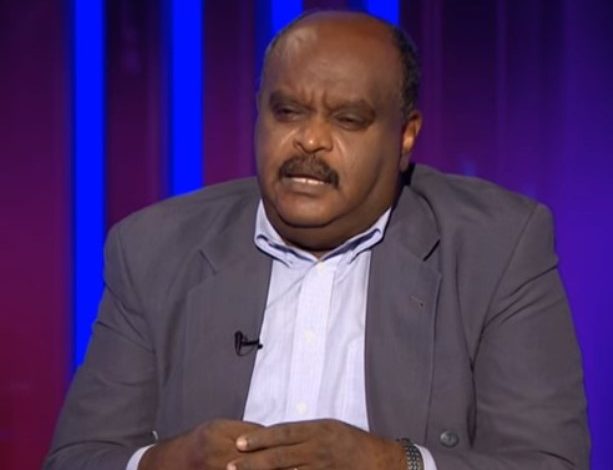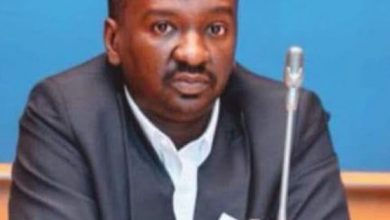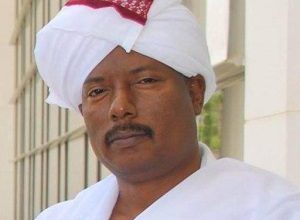Sudan’s War and Arming the Civilians

By: Dr. Alshafie Kheder Saeed
The discussion of the mobilization and arming civilian phenomenon in Sudan is one of the two proposals and calls that we tackled in the two previous articles.
The first call was an invitation to both the Coordination of Democratic Civil Forces (Taqaddum) and the civil forces outside it to form a joint preparatory committee to carry out the political and procedural preparation for all-inclusive congress for the political and civil forces, to be held as soon as possible. We extended the second call to the High-level Tripartite Committee, which was formed by the African Union to settle the conflict waging in Sudan, appealing it to intensify their efforts to unify the regional and international calls and assembling them in one platform instead of branching a new track of a platform starting from zero. In the event of lack of access to hold the congress mentioned in our first call, we proposed that the (Taqaddum) forces call on each other and the trade union front and resistance committees / emergency rooms , the retired regular forces officers and any other civil components for an initiative by one of these parties of the forces to form and action group to agree on a vision for stopping the war and take it to other direct meetings with the warring parties and the international and regional community while this vision forms a material for organizing a popular peaceful resistance inside the country against war and the attempts to bury alive December Revolution.
In our previous article, we initiated the discussion of our second proposal , which was oriented to the Sudanese civil forces , related to mobilization and armed popular resistance, and we said the calls for mobilization and armed popular resistance, is an objective and expected response to mobilize the natives to defend their areas. It came as a reaction of the broad violations of the Rapid Support Forces (RSF) against the citizens and it reflects and increasing conception among the citizens that the Army alone is incapable to protect them, and considering it as a make of the ousted regime remnants is not correct , despite of quotes that the confirm that those remnants are trying to penetrate them for serving their goals opposing the Sudanese people’s revolution and for settling political scores with the revolution’s forces and revenge against them. Therefore, they arrest the members of resistance committees and emergency rooms committees and Forces of Freedom & Change (FFC) members, and threatening to liquidate them accusing them of being agents of RSF. We noted the mistake of dealing with the Sudanese experience as if it has the same features of the popular resistance experience in Algeria, Vietnam of South Africa for example. The special natural circumstances and the time and place contexts are different here and there.
On the other hand, it right that there is arm outside the regular forces in Sudan, which was at first due to the war in the neighbouring countries, specifically Libya and Chad, but was a limited presence and restricted in Darfur before it spread later in the other regions of the country. It is correct that mobilizing civilians and arming them to support the army is not a new thing. The third Democratic era, 1986 -1989, had witnessed distribution of arms to the tribes of Arab origins in the areas of Darfur and Kordufan adjacent to the South of Sudan and formed into what was known as “Maraheel” for military operations side by side to the Sudanese Armed Forces (SAF) against the Sudan People’s Liberation Movement (SPLM) army.
After taking over the power, the “Ingaz” regime continued the program of arming tribes and form militias to fight with them with the aim of assisting it in its fight against the armed opposition in Darfur, then with the aim of protecting the regime in the countries center. Despite the fact that Ingaz denied its involvement in arming the tribes and forming militias therefrom, all the evidences and investigations, including the investigations of the Sudanese and International Investigation Committees on Darfur events, proved the opposite. Thus, the arming of the different tribal groups and encouraging them to take by force what they considered as their right, happened either by influential circles in the ruling power and for political reasons, or as a natural reaction of the “Ingaz” rule, which took the lead of the use of violence to deter the force of the protesting movements in the peripherals, to the extent that the matter reached absence of law and the state power in wide areas of the country.
Regarding the calls of mobilization and the armed popular resistance, which is taking place now in Sudan, we consider that there is a defect , moreover there danger in the method it is formed . It is clear that all the areas that witnessed the response towards mobilization and formation of armed resistance calls were featured by regionalism and ethnicity and led by the leaders of clans and tribes , and they are characterized by hostility against western Sudan sons and a call to expel them from the northern areas, given that the RSF is from Darfur region. On the other hand, many of the social components in Darfur Region , particularly the components that belong to Arab origins declared their affiliation to the RSF. Also, arming the civilian on regionalism basis will negatively affect the SAF itself, because most of its soldiers are from the marginal areas, among which is Darfur.
Definitely, these soldiers will be affected by racial positions towards their people, in the north for example, the matter that might motive them not to continue with the SAF. In all cases, in the light of the racial and hate speech, and the big polarization that resulted in the continued fighting for many months, the war will take an ethnic and racial track that drags the country into entire civil war, where killing will be according to ethic or political identity. The expected result will be division of the country and split its unity.
Due to its lack of transport , logistic, heavy armament, leadership and control, it is doubtful that the armed popular resistance to make any substantial difference in the military status , but it can contribute in weakening the Army it it compete it in the recruits, arms and financing by the state , and the RSF experience is an example.
Therefore, our second proposal is that it imperative that the Sudanese civil forces should place among its agenda priorities, how to deal with the phenomenon of mobilization and forming armed popular resistance. On our part, we will discuss, later this proposal and present a contribution on this method.



